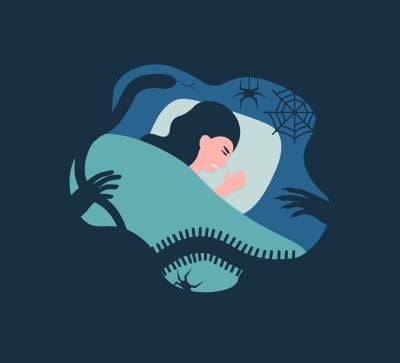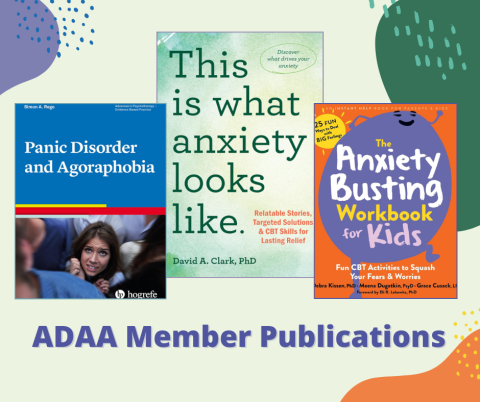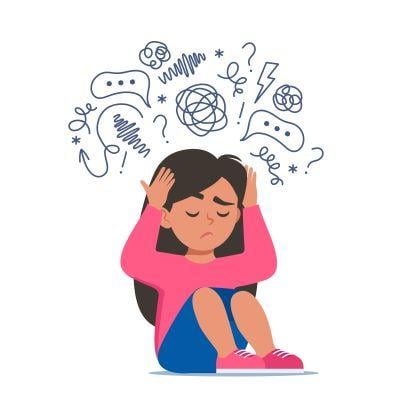When Disturbing Dreams Affect Quality of Life: Mental Health Nightmare Disorder and Treatment
When Disturbing Dreams Affect Quality of Life: Mental Health Nightmare Disorder and Treatment

Contrary to what you might believe, negative dreams are more common than the sweet ones wished upon us before slumber, yet most of us don’t remember a large portion of our bad dreams because we sleep through them. We spend about a third of our lives sleeping and a good night’s sleep, as we all know, is necessary for healthy brain function and mental and physical wellbeing. Lack of sleep is linked to heart disease, weight gain, inflammation, and depression, as well as triggering or worsening anxiety.
About 4 to 6 percent of Americans suffer from nightmare disorder, also known as dream anxiety disorder, a sleep condition characterized by frequent nightmares. How frequent? At least once a week, according to Michael Nadorff, PhD, whose research focuses on sleep difficulties, particularly nightmares, and their association with suicidal behavior. The disorder is defined by extended, recurring, vivid dreams that awaken the person and cause great distress, emotional dysregulation and daytime impairment.
The Associate Professor and Director of the Clinical Psychology PhD Program at Mississippi State University told ADAA how his interest in nightmares, their impact on mental health and the correlation between them and suicidal behavior has taken him down an intriguing and dark “rabbit hole” from which he has emerged with enlightening evidence-based information.
Dr. Nadorff will present this information, research, and treatment strategies at ADAA’s 2023 Annual Conference in DC in a State-of-the-Art Clinician Session titled: Nightmares - Causes, Correlates and Treatments. Ahead of the conference, Dr. Nadorff spoke with ADAA about his work, his reasons for wanting to present his session, and his passion for the stuff of nightmares.
Treatment is Not a Pipe Dream
“Nightmares are an interesting thing, yet we don’t talk so much about alleviating them,” Dr. Nadorff said, noting nightmare sufferers are often reluctant to mention their distress to healthcare providers.
“Some think it’s normal to have that many nightmares and aren’t aware there is treatment.” He added that there aren’t many clinicians who know how to treat nightmares, but he hopes that will change.
Dr. Nadorff says treating nightmares is not difficult. “If you give me an hour with a clinician, that clinician will know how to treat nightmares.”
His bold statement is backed by scientific research and evidence-based practices of course. Cognitive strategies involving modified Cognitive Behavioral Therapy (CBT) with relaxation, use of the imagination and practicing of new scenarios require some work on both the part of the clinician and the patient but are relatively easy, and fun, he says.
“I use a lot of Imagery Rehearsal Therapy (IRT) for nightmares, and in this therapy, I have the person change the nightmare they’re having in any way that makes it less frightening, distressing or traumatic.”
Dr. Nadorff explained how he rehearses the new dream with the patient and has them practice the new version twice a day for about 10 minutes, each time using visual imagery and working through that new dream in their waking hours with as much detail as possible.
“From just doing that, usually one of two things happens. Either you stop having the nightmare or you start having the new dream,” he said.
Reimagine All the People…
Dr. Nadorff described how impactful the therapy was on a veteran he saw during his clinical training. The patient was having a recurring terror-filled nightmare where he feared something awful would happen to a military vehicle full of soldiers he was driving as darkness set in. Then he would wake up, scared, sweating, heart beating rapidly and understandably shaken.
Dr. Nadorff worked with him on reimagining the dream.
“Instead of driving a military vehicle he wanted to be in his own car. Instead of soldiers he was driving with his children to a park. His father had passed before his children were born and he regretted that they had never met their grandfather, so we put him in the car too,” Dr. Nadorff recounted. They visualized the new dream, and the patient went home to practice it.
“The next session, he’s in my waiting room, crying,” Dr. Nadorff recalled, thinking he had done something wrong as the patient seemed so upset. But then, once inside the office, he tells Dr. Nadorff that he started having the new dream.
“He told me what a meaningful experience it was to have the dream with his dad and his children,” Dr. Nadorff continued, “it was so humbling to see that, to see him overcoming his nightmare and in its place, something so significant happened.”
Meaningful and Possibly Life Saving
Nightmares are frightening and those with nightmare disorder can suffer from persistent and severe feelings of dread, panic, sadness, guilt and /or rage. Experiencing strong emotions like that on a consistent basis is likely to interfere with one’s daily functions and lead to serious mental health issues. Dr. Nadorff says that many people who suffer from nightmare disorder have a mental health condition like PTSD, borderline personality disorder and even schizophrenia.
“Nightmares can be a potential sign that a relapse is about to occur in people with schizophrenia, and there’s some relation of nightmare disorder in people with depression and anxiety.”
Dr. Nadorff says that nightmare disorder can worsen a pre-existing mental health condition and if left untreated, there could be dire consequences.
“The longer and more often someone has severe nightmares without getting help, the higher risk that person becomes for suicidal behavior,” he said, revealing his grandmother died by suicide and that was a catalyst for his suicide research. He then became fascinated by sleep problems and their treatments.
While other treatments and even medications for nightmare disorder exist, Dr. Nadorff says the imagery therapy treatment he generally uses has proven to be the most effective, evidence-based and fastest.
“The 2023 ADAA conference will be a good way to present the information and get health providers interested in getting trained,” Dr. Nadorff said, expressing hope that his session will be meaningful. “You can have the best treatment in the world, but if people don’t have access to it or use it, then it’s not worth much.”




















